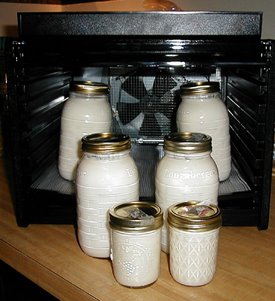When I started this local eating thing, I had no intention of puttin’ food by (storing it either by canning, freezing, drying, or some other method). I was to be a grasshopper, patron of the ants of the world. It turns out that there are not enough ants to feed locavore grasshoppers. While we made it through the winter, we did so with lots non-local veggies. You can get meat and dairy products all winter long, but fruits and veggies are hard to come by. No offense to Two Guys from Woodbridge, but hydroponic salad greens start to get to you. And you want something you can eat hot.
So, the plan this year is to freeze and dehydrate as we go. We may even explore canning.
This weekend, we cooked and froze:
– two bunches of beets
– beet greens from said bunches (sauteed with garlic and olive oil–pretty much how I cook most greens)
– corn off the cob (two ears)
– summer squash melee (from Simply Recipes, but without the cheese).
– roasted peppers
– kale (sauteed with olive oil and pancetta)
– a head of broccoli (blanched)
We store it in freezer bags using the FoodSaver home vacuum-packaging system. It sucks out the air and seals the bag. Nice (except when the food has a significant amount of liquid).
Looking back over the list, it doesn’t seem like as much now as it did while we were preparing it.
